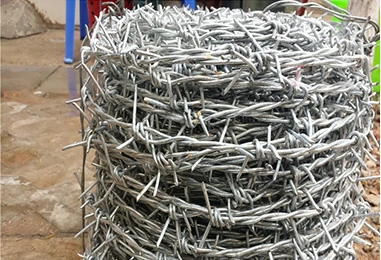 TEL:
+86-13102802206
TEL:
+86-13102802206
 Email:
fencenetting@china.com
Email:
fencenetting@china.com
 Language
Language
 TEL:
+86-13102802206
TEL:
+86-13102802206
 Email:
fencenetting@china.com
Email:
fencenetting@china.com
 Language
Language


The Significance of 'Wire for Iron' in Modern Society
In an age characterized by rapid advancements in technology and infrastructure, the phrase wire for iron may seem quaint, yet it encapsulates critical themes of utility, innovation, and the very relationship we hold with materials. Originally originating from the early industrial age, where wire was utilized to strengthen iron structures and facilitate diverse applications, this concept has evolved into a broader metaphor that signifies both the connection and the strength of underlying systems in contemporary society.
Historical Context
The origins of wire for iron can be traced back to the 18th and 19th centuries during the Industrial Revolution. In that era, iron emerged as a dominant material used in constructing buildings, bridges, and railways. However, its strength could often lead to vulnerabilities, such as brittleness. Ingenious minds found that by integrating wire—often made from steel—they could enhance the structural integrity of iron. This combination produced reinforced structures capable of supporting greater loads and withstanding environmental stresses. The invention of reinforced concrete later borrowed from this principle, showcasing the synergy between materials that improves architectural viability.
Symbol of Connection
Beyond its literal application, wire for iron serves as a powerful symbol of connection in numerous realms
. In telecommunications, for instance, the idea parallels the networks that interlink various components—be it in electronics, power distribution, or even the internet. Just as wire connects and stabilizes iron structures, data cables and fiber optics connect our digital world, allowing seamless communication and information exchange. As societies become increasingly interconnected, the importance of these invisible wires metaphorically highlights the webs of relationships—whether personal, professional, or societal—that bind us together.Innovation and Adaptation

The fusion of wire and iron also embodies the spirit of innovation and adaptation. In a world frequently faced with emerging challenges—from climate change to economic shifts—the ability to modify and improve existing materials is crucial. Researchers and engineers continue to push the boundaries of what can be achieved by experimenting with combinations of materials, leading to advancements in fields such as construction, transportation, and renewable energy. For example, the development of carbon fiber and other composites represents a modern interpretation of the wire for iron philosophy, where new materials enhance performance while reducing weight and environmental impact.
This adaptability is vital in creating sustainable solutions that address contemporary issues. Urban planners are now looking at how to use reinforced materials in a way that not only provides structural safety but also enhances energy efficiency and reduces carbon footprints. The lessons drawn from the wire for iron concept can inspire innovative thinking that embraces both tradition and modernity.
The Future of 'Wire for Iron'
Looking ahead, the relevance of wire for iron will undoubtedly persist, albeit in new forms. With the advent of smart technologies and the Internet of Things (IoT), our built environments are becoming increasingly interconnected. Just as wire once enabled the reinforcement of iron, modern connectivity solutions fortify the resilience of our infrastructure. Smart sensors embedded in structures can monitor integrity, predict maintenance needs, and even interact with energy systems, reflecting a sophisticated evolution of the original concept.
Moreover, as we delve deeper into sustainable practices, the integration of renewable energy sources necessitates innovative approaches to existing infrastructure. Emerging methods such as 3D printing and bioconstruction push the boundaries of traditional materials, resulting in structures that are not only strong and resilient but also adaptable to changing conditions.
Conclusion
In conclusion, the theme of wire for iron transcends its conventional interpretation, representing a nexus of innovation, connection, and resilience in modern society. As we navigate a complex landscape defined by technological change and environmental demands, the principles embodied in this phrase remind us of the importance of evolution and collaboration. By reinforcing our foundational materials—both literally and metaphorically—we can build a robust future that honors our past while bravely embracing new possibilities. In this journey, we are called to recognize the wires that connect us, fortify us, and push us toward a more interconnected and sustainable world.